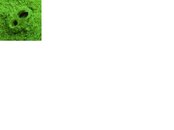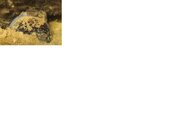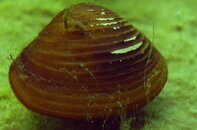I see these critters whenever I'm diving and this year started taking a closer look. Does anyone know what they are? I'm guessing Asian clams? They have 2 openings, one bigger than the other, and they're like this unless you get very closer, then they snap shut for a few seconds.
You are using an out of date browser. It may not display this or other websites correctly.
You should upgrade or use an alternative browser.
You should upgrade or use an alternative browser.
Clams of mussels at Clear Springs
- Thread starter cruiser
- Start date
Please register or login
Welcome to ScubaBoard, the world's largest scuba diving community. Registration is not required to read the forums, but we encourage you to join. Joining has its benefits and enables you to participate in the discussions.
Benefits of registering include
- Ability to post and comment on topics and discussions.
- A Free photo gallery to share your dive photos with the world.
- You can make this box go away
Debraw
Contributor
Could be barnacles? Were they attached to anything? Or just on the bottom? Ok I had to edit my post. I tried to doa search of freshwater barnacles, and there seems to be no such animal. Ok still Googling.
Ok how about this?
Mussels
"All freshwater mussels belong to the mollusk order Unionoida, a solely freshwater group. These animals are large (up to 150 mm or 6 inches in length) bivalved creatures possessing a hinge which is most developed posterior of the beaks or umbos. The shells are typically covered by a thick skin or periostracum that is variously colored and sometimes rayed on the disk depending upon the species. Internally, the shell has a "pearly" appearance due to the nacreous lining of the inner shell surfaces. These features have made freshwater mussels popular among collectors since the early 19th century.
In the region of the shell hinge, articulating "teeth" are variously developed or absent. When present, these teeth radiate from the beaks. The anterior teeth, when present, are called pseudocardinals and are thick, short, and, when well developed, grooved, and serrated. The posterior teeth, when present, are called laterals and are always elongate and lamellate. "
The teeth is what threw me. Great post man, and great picture.
Ok how about this?
Mussels
"All freshwater mussels belong to the mollusk order Unionoida, a solely freshwater group. These animals are large (up to 150 mm or 6 inches in length) bivalved creatures possessing a hinge which is most developed posterior of the beaks or umbos. The shells are typically covered by a thick skin or periostracum that is variously colored and sometimes rayed on the disk depending upon the species. Internally, the shell has a "pearly" appearance due to the nacreous lining of the inner shell surfaces. These features have made freshwater mussels popular among collectors since the early 19th century.
In the region of the shell hinge, articulating "teeth" are variously developed or absent. When present, these teeth radiate from the beaks. The anterior teeth, when present, are called pseudocardinals and are thick, short, and, when well developed, grooved, and serrated. The posterior teeth, when present, are called laterals and are always elongate and lamellate. "
The teeth is what threw me. Great post man, and great picture.
Last edited:
These are definitely sunk 1/2 way in the mud. In a clearing it's almost like a field of them and when you get close, the valves all snap shut. They vary in size, and I've seen some dead ones (shells) that measure about 1-1/2 inches. From the looks of what comes out of one of the valves, they're definitely filtering the water--there's a distinct input valve and output valve.
I also have a picture of one in the rocks that not only has openings, but short tubes that project out of the openings. I'll see if I can find that pic and post it.
I first noticed these when I was practicing buoyancy and slowed down, hovered in one spot and noticed what was beneath me. Now I see them all over the pond and lots of them.
I also have a picture of one in the rocks that not only has openings, but short tubes that project out of the openings. I'll see if I can find that pic and post it.
I first noticed these when I was practicing buoyancy and slowed down, hovered in one spot and noticed what was beneath me. Now I see them all over the pond and lots of them.
Debraw
Contributor
Wow, great find. I never noticed those before. You know who we need to ask? Archman! Let me see if I can PM him and get him to take a look at your pics. Awesome pics. What kind of camera setup are you using?
Ok I contacted Archman ia PM. He has not been on since May 25 so I don't know how long it will take him to get back to us.
Ok I contacted Archman ia PM. He has not been on since May 25 so I don't know how long it will take him to get back to us.
Last edited:
If the shells are less than 2 inches across... and don't get any bigger... and you're diving in a Texas lake... it's probably those stinking Asian clams (Corbicula). They're all over Lake Travis.
Two ways to distinguish Corbicula from native unionid clams (other than size... native clams can get pretty big) are to look at shell length/width (Corbicula is fairly circular), and the ribbing on the outside (Corbicula has multiple, prominent concentric ribbing).
If someone can post a pic showing the entire shell, it's pretty easy to rule out Corbicula vs. a native clam.
Two ways to distinguish Corbicula from native unionid clams (other than size... native clams can get pretty big) are to look at shell length/width (Corbicula is fairly circular), and the ribbing on the outside (Corbicula has multiple, prominent concentric ribbing).
If someone can post a pic showing the entire shell, it's pretty easy to rule out Corbicula vs. a native clam.
Timeliner
Contributor
She takes nice pictures doesn't she ?!!
I have not seen any of then myself.
I love fresh water clams....... they are so cool.
I hope we find out what cruiser took a picture of !!
Being a Biology major in college till I was a junior I had the joy of being around calms / bivalves or what ever the heck you want to call them in the process of college study. I have performed researce procedures on them that may be against the law in the next election cycle according to PETA.
Shoot.... Some Clams already have Government health benifits !
We have more species of clams in America then in any place in the world.
North Carolina tops the list for most species in the world.
They have a threat from the introduced Asian Mussels.
This ain't about imagrant politics it's just a fact.
I say do your research well and then when you find introduced species.....
Click Click Pull.........
I have not seen any of then myself.
I love fresh water clams....... they are so cool.
I hope we find out what cruiser took a picture of !!
Being a Biology major in college till I was a junior I had the joy of being around calms / bivalves or what ever the heck you want to call them in the process of college study. I have performed researce procedures on them that may be against the law in the next election cycle according to PETA.
Shoot.... Some Clams already have Government health benifits !
We have more species of clams in America then in any place in the world.
North Carolina tops the list for most species in the world.
They have a threat from the introduced Asian Mussels.
This ain't about imagrant politics it's just a fact.
I say do your research well and then when you find introduced species.....
Click Click Pull.........
Debraw
Contributor
and there you have it.....
Wow, great find. I never noticed those before. You know who we need to ask? Archman! Let me see if I can PM him and get him to take a look at your pics. Awesome pics. What kind of camera setup are you using?
Ok I contacted Archman ia PM. He has not been on since May 25 so I don't know how long it will take him to get back to us.
Debraw--
I use a Canon PowerShot SD 700 IS with the Canon underwater housing. Have been very happy with the pictures for a point and shoot.
If the shells are less than 2 inches across... and don't get any bigger... and you're diving in a Texas lake... it's probably those stinking Asian clams (Corbicula). They're all over Lake Travis.
Two ways to distinguish Corbicula from native unionid clams (other than size... native clams can get pretty big) are to look at shell length/width (Corbicula is fairly circular), and the ribbing on the outside (Corbicula has multiple, prominent concentric ribbing).
If someone can post a pic showing the entire shell, it's pretty easy to rule out Corbicula vs. a native clam.
Here's a picture of a whole one, it was about 1-1/4 inches across.
Attachments
Similar threads
- Replies
- 2
- Views
- 172
- Replies
- 16
- Views
- 420
- Replies
- 59
- Views
- 2,204
- Replies
- 12
- Views
- 611






